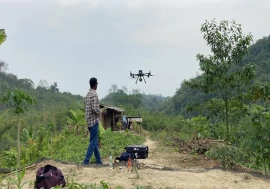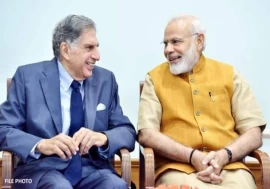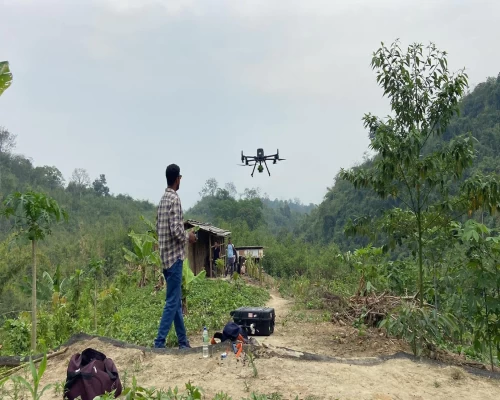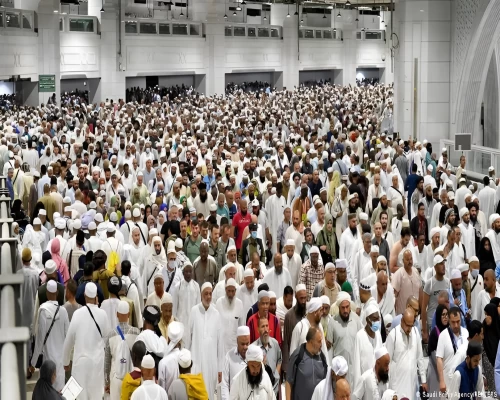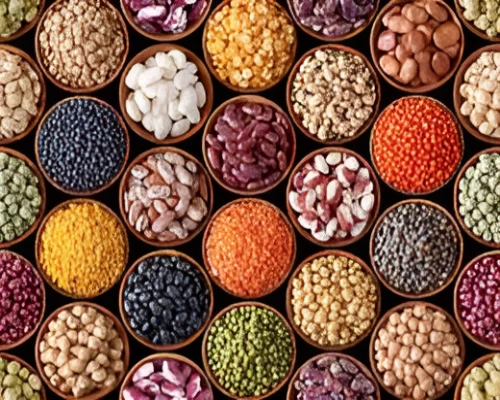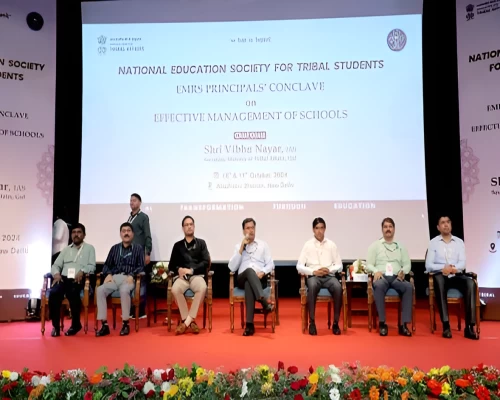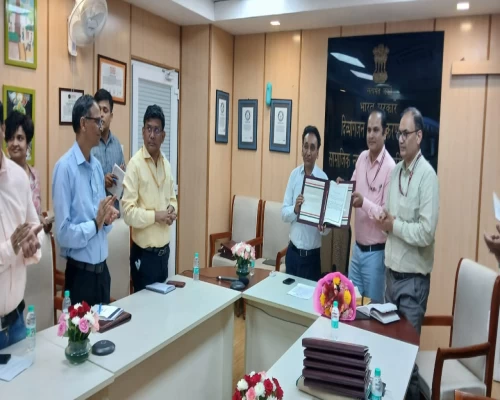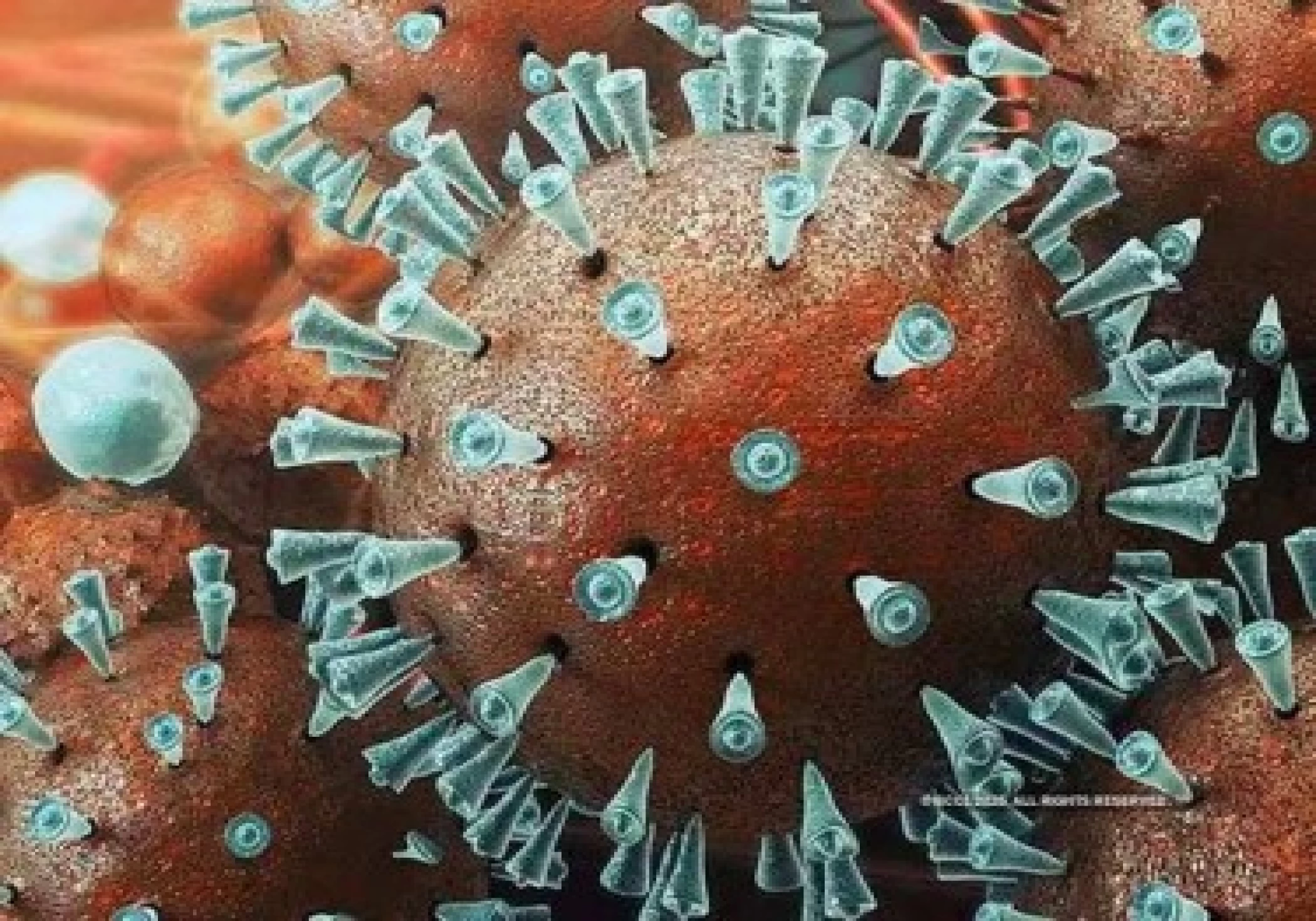
By Rajeev Ranjan Roy
There is an element of resilience in India’s fight against Covid-19. Notwithstanding our huge population, diverse socio-economic and cultural milieu, we have been able to set an example in managing not only the coronavirus pandemic but also initiating the process of building back the economy in a sustainable manner, which has become worth emulating for the world. During the current financial year, India is poised to log double-digit growth, which only shows maturity in our approach to dealing with an unprecedented pandemic.
The gross Goods and Services Tax (GST) revenue collected in the month of April of current financial year has been logged at a record high of Rs 1,41,384 crore of which CGST is Rs 27,837 crore, SGST is Rs 35,621 crore, IGST is Rs 68,481 crore (including Rs 29,599 crore collected on import of goods) and cess is Rs 9,445 crore (including Rs 981 crore collected on import of goods). Despite the second wave of Covid-19 pandemic affecting several parts of the country, Indian businesses have once again shown remarkable resilience by not only complying with the return filing requirements but also paying their GST dues in a timely manner during the month. It is no mean achievement, indeed!
All this has been possible thanks to holistic handling of Covid-19 and reverses caused by the coronavirus. From feeding nearly 80 crore poor people with critical support of food grains, putting money in their accounts under the Direct Benefit Transfer (DBT) scheme, stimulus packages to industries to moratorium boost, the Central government rose to the occasion with a balanced mix of vision, compassion and determination.
The first wave of Covid-19 in 2020 had unfolded a varied set of problems and challenges, which were met with articulate planning and response mechanisms. As a result, the reverses were contained. The second wave of Covid-19 is more debilitating but India is better positioned in terms of paraphernalia to blunt the attack of the virulent virus. A number of measures have been initiated to deal with the second wave of coronavirus without going for a complete lock down. The mantra of tracking, testing and vaccinating has proved a blessing in disguise!
The Central government is leading the fight against Covid-19 pandemic in collaboration with States and UTs through a ‘whole of government’ approach. Vaccination forms an integral component of the five point-strategy of containment and management of the pandemic including test, track, treat and Covid appropriate behaviour. The implementation of the liberalized and accelerated strategy of Covid-19 vaccination has started from May 1. The Centre has so far provided nearly 16.54 crore vaccine doses to States/UTs free of cost. More than 78 lakh Covid-19 vaccine doses are still available with States/UTs to be administered. Furthermore, more than 56 lakh vaccine doses will be received by States/UTs within the next three days.
In line with the direction of Prime Minister Narendra Modi to boost the availability of oxygen to hospitals, the PM CARES Fund has given in-principle approval for allocation of funds for the installation of 551 dedicated pressure swing adsorption (PSA) medical oxygen generation plants inside public health facilities in the country. The PM has directed that these plants should be made functional as soon as possible. These plants will serve as a major boost to oxygen availability at the district level. These dedicated plants will be established in identified government hospitals in district headquarters in various States/UTs. The procurement will be done through the Union Ministry of Health and Family Welfare. The PM CARES Fund had earlier this year allocated Rs 201.58 crore for the installation of additional 162 dedicated PSA medical oxygen generation plants.
The basic aim behind establishing PSA oxygen generation plants at government hospitals in the district headquarters is to further strengthen the public health system and ensure that each of these hospitals has a captive oxygen generation facility. Such an in-house captive oxygen generation facility would address the day-to-day medical oxygen needs of these hospitals and the district. In addition, the liquid medical oxygen (LMO) would serve as a ‘top up’ to the captive oxygen generation. Such a system will go a long way in ensuring that government hospitals in the districts do not face sudden disruption of oxygen supplies and have access to adequate uninterrupted oxygen supply to manage Covid-19 patients and other patients needing such support.
Thanks to the whole government approach, there is no dearth of positive interventions. The Ministry of Railways has deployed nearly 4400 isolation coaches with almost 70,000 beds. To work concurrently with the States and in a bid to reach out as swiftly as possible, the Railway has drawn a de-centralised plan of action empowering zones and divisions to work out their Memorandum of Agreement for cohesive action. These isolation coaches can be easily moved and positioned at places of demand on the Indian Railways network. As per the States’ demand, 191 coaches have been handed over to various states for Covid care with a bed-capacity of 2990 beds. In Delhi, the Railway has catered to the full demand of the State government for 75 Covid care coaches with a capacity of 1200 beds. 50 coaches are positioned at Shakurbasti and 25 coaches at Anand Vihar stations.
Similarly, Defence Minister Rajnath Singh has invoked special provisions and granted emergency financial powers to the Armed Forces to empower them and speed up their efforts in tide over the current Covid-19 situation in the country. These powers will help formation commanders to establish and operate quarantine facilities/hospitals and undertake procurement/repair of equipment/items/material/stores, besides provisioning of various services and works required to support the ongoing effort against the pandemic. The emergency powers were sanctioned to the Armed Forces last year too when the COVID-19 pandemic first broke out. This had helped the Armed Forces tackle the situation faster and in an effective manner.
Cantonment Boards have extended a helping hand to Civil Administration/State Governments in various parts of the country to deal with Covid-19 situation. The Steel Authority of India Limited (SAIL) has pressed its own resources and facilities into producing liquid medical oxygen. A 57-member naval medical team consisting of four doctors, seven nurses, 26 paramedics and 20 supporting staff has been deputed to Ahmedabad for two months period to begin with and the duration would be extended if required. The Air Force and Navy have also chipped in to transport oxygen tankers from different parts of the world to the place of need in India. Fertilizer companies in the private and public sector have decided to join hands to supply 50 metric tonnes of medical oxygen per day to boost India’s fight against Covid-19. It is expected that approximately 50 metric tonnes (MT) of medical oxygen per day can be made available for Covid-19 patients by the fertilizer plants.
In conclusion, the whole government approach has proved a turning point in India’s fight against Covid-19. Prime Minister Modi himself is monitoring the whole situation. From taking feedback from the Empowered Group on Economic and Welfare measures to discussing every minute thing with other stakeholders, he is also ensuring close coordination with the States to ensure that war against Covid-19 is fought decisively. The Empowered Group on issues relating to facilitating supply chain and logistics management is ensuring seamless movement of goods so that supply chain disruptions are avoided. At the same time, private sector, NGOs and international organizations have been effectively involved in mitigating reverses caused by Covid-19. It is far off when India will emerge victorious against coronavirus thanks to the whole government approach of the current dispensation at the Centre.
(The writer is a senior journalist and author. The views expressed are strictly his personal)


